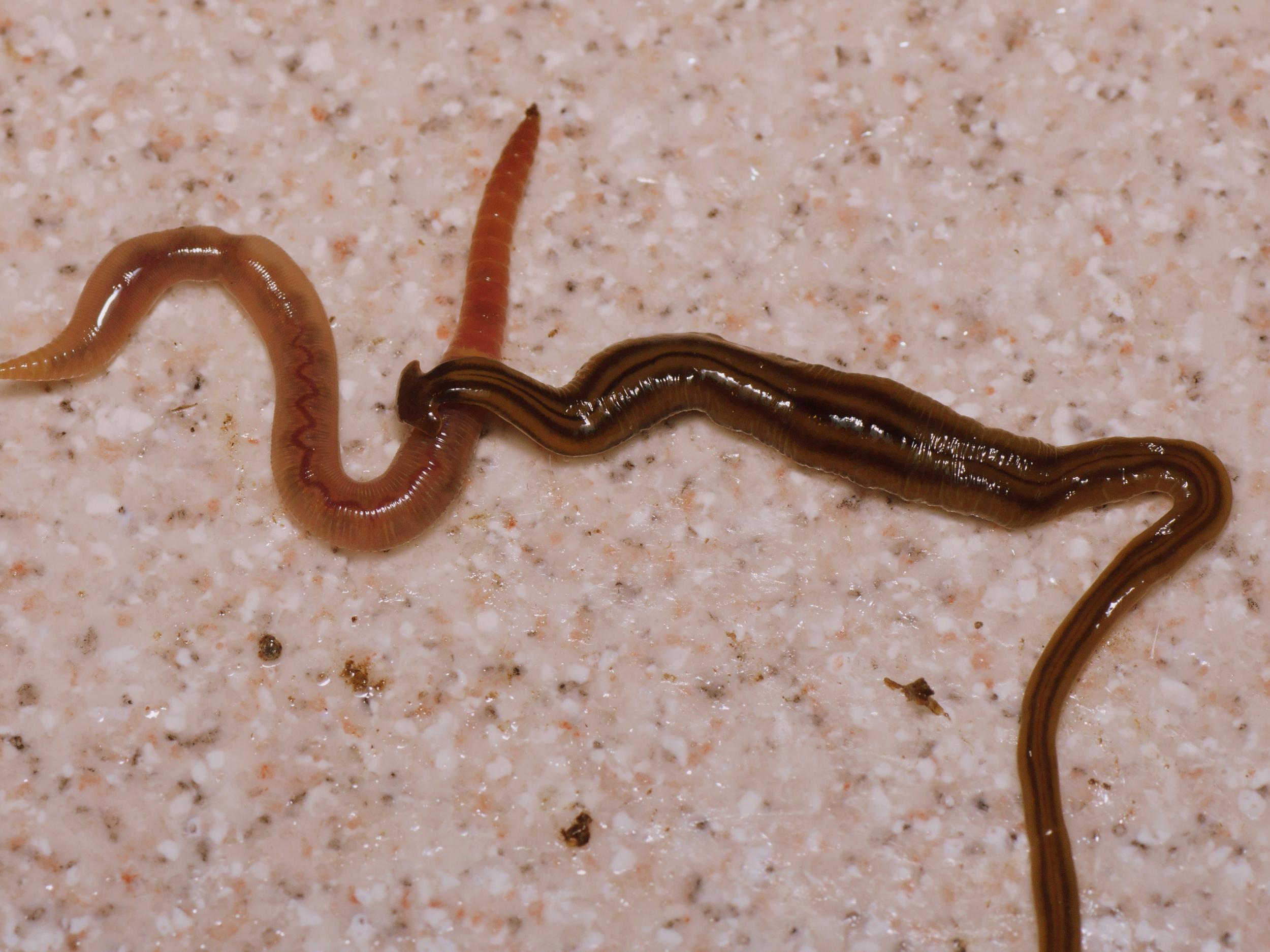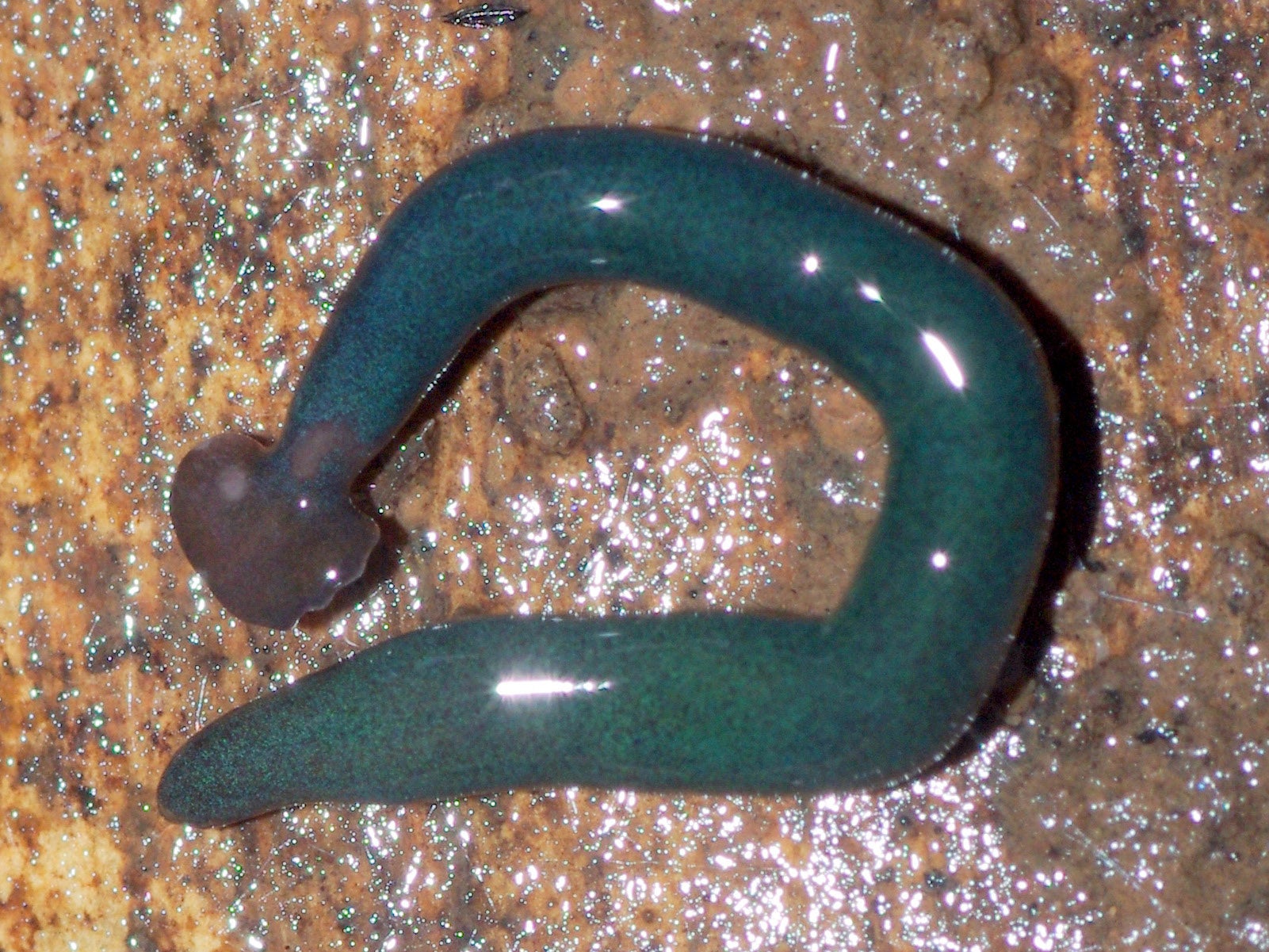Giant predatory worms invading France and threatening local wildlife
Creatures that grow up to 40cm have been living virtually unnoticed across the region for decades
Giant predatory worms from tropical parts of Asia that have stealthily invaded French gardens pose a threat to local wildlife, scientists are warning.
The voracious creatures have infiltrated gardens across the country and also French territories.
A new study has collected reports of the unusual creatures, which are known to grow up to 40cm in length.
Despite their size, these unusual creatures would have gone completely unnoticed were it not for the efforts of amateur naturalist Pierre Gros who took a photograph of an unidentified worm in 2013.
“This photograph was sent from email to email to email and finally it came to me,” Professor Jean-Lou Justine, a zoologist at the French National Museum of Natural History told The Independent.
“I looked at it and said 'Well, this is not possible – we don’t have this kind of animal in France'.”
At first he thought it was a prank, especially when weeks later Mr Gros sent him images of a second and third exotic flatworm species, all allegedly found in his garden.

However, having verified the images Professor Justine decided to assess the scale of the invasion.
Over five years he gathered recorded sightings from over 100 contributors based around the country, as well as some in tropical French territories including Guadeloupe, Martinique and French Guiana. The oldest sightings dated back to 1999.
“What we know now is that there are invasive flatworms almost everywhere in metropolitan France,” he said.
The study published in the journal PeerJ and co-authored by Mr Gros looks specifically at the presence of hammerhead species – a group with shovel-like heads that have been known to grow up to one metre in length.
All of these flatworms are predators, which means the pose a serious threat to other small creatures that inhabit the soil, as well as ecological processes in general.
Though the researchers did not conduct a full evaluation of the threat posed by these animals – a process which requires costly and complex ecological surveys – Professor Justine pointed to the example of the New Zealand flatworm in the UK.

These large invasive worms now thrive in wetter parts of Britain, and are known to decimate local earthworm populations. As a result, measures are now in place to control their movements between countries.
This is easier said than done, and Professor Justine explained that most of the Asian species currently on the loose in Europe are likely to have originated from populations transported over in tropical plants.
One of the species identified in the new study, Bipalium kewense, actually takes its name from London’s Kew Gardens. The first specimen identified by scientists was found in one of the botanical garden’s hothouses, having presumably arrived in one of the tropical plant deliveries.
As for how the monster hammerhead worms have managed to take up residence for decades without being noticed by the wider population or scientific authorities, Professor Justine is baffled.
“I am still amazed – I don’t understand how this is possible in a developed country,” he said.
Join our commenting forum
Join thought-provoking conversations, follow other Independent readers and see their replies
Comments
Bookmark popover
Removed from bookmarks